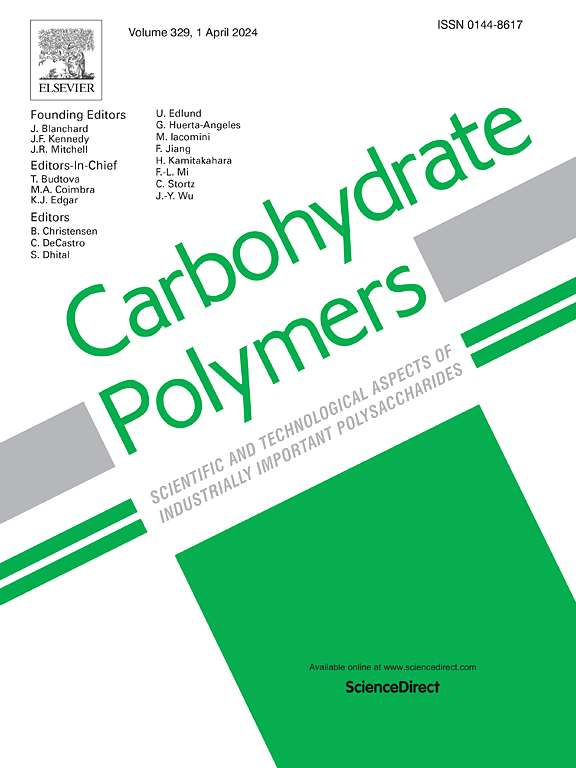Pattern of substitution affects the extractability and enzymatic deconstruction of xylan from Eucalyptus wood
IF 10.7
1区 化学
Q1 CHEMISTRY, APPLIED
引用次数: 0
Abstract
Glucuronoxylan is the main hemicellulose in the secondary cell wall of angiosperms. Elucidating its molecular structure provides a basis for more accurate plant cell wall models and the utilization of xylan in biorefinery processes. Here, we investigated the spacing of acetyl, glucuronopyranosyl and galactopyranosyl substitutions on Eucalyptus glucuronoxylan using sequential extraction combined with enzymatic hydrolysis and mass spectrometry. We found that the acetyl groups are preferentially spaced with an even pattern and that consecutive acetylation is present as a minor motif. Distinct odd and even patterns of glucuronidation with tight and sparse spacing were observed. Furthermore, the occurrence of consecutive glucuronidation is reported, which adds to the growing body of evidence that this motif is not only present in gymnosperms but also in angiosperms. In addition, the presence of terminal galactopyranosyl units, which can be released by β-galactosidase, altered the digestibility of the glucuronoxylan by GH30 and GH10 xylanase and appeared to be clustered within the polymeric backbone. These findings increase our understanding of the complex structure of glucuronoxylans and its effect on the extractability and biological degradation of Eucalyptus wood.

求助全文
约1分钟内获得全文
求助全文
来源期刊

Carbohydrate Polymers
化学-高分子科学
CiteScore
22.40
自引率
8.00%
发文量
1286
审稿时长
47 days
期刊介绍:
Carbohydrate Polymers stands as a prominent journal in the glycoscience field, dedicated to exploring and harnessing the potential of polysaccharides with applications spanning bioenergy, bioplastics, biomaterials, biorefining, chemistry, drug delivery, food, health, nanotechnology, packaging, paper, pharmaceuticals, medicine, oil recovery, textiles, tissue engineering, wood, and various aspects of glycoscience.
The journal emphasizes the central role of well-characterized carbohydrate polymers, highlighting their significance as the primary focus rather than a peripheral topic. Each paper must prominently feature at least one named carbohydrate polymer, evident in both citation and title, with a commitment to innovative research that advances scientific knowledge.
 求助内容:
求助内容: 应助结果提醒方式:
应助结果提醒方式:


